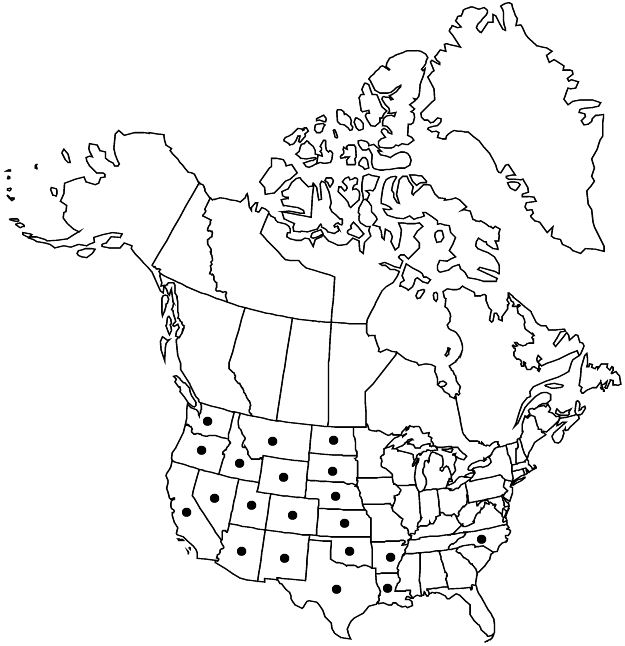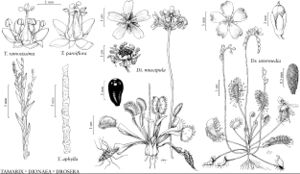Difference between revisions of "Tamarix ramosissima"
Fl. Altaica 1: 424. 1829.
FNA>Volume Importer |
FNA>Volume Importer |
||
| Line 61: | Line 61: | ||
|publication year=1829 | |publication year=1829 | ||
|special status=Selected by author to be illustrated;Introduced;Weedy | |special status=Selected by author to be illustrated;Introduced;Weedy | ||
| − | |source xml=https://jpend@bitbucket.org/aafc-mbb/fna-data-curation.git/src/ | + | |source xml=https://jpend@bitbucket.org/aafc-mbb/fna-data-curation.git/src/f6b125a955440c0872999024f038d74684f65921/coarse_grained_fna_xml/V6/V6_790.xml |
|genus=Tamarix | |genus=Tamarix | ||
|species=Tamarix ramosissima | |species=Tamarix ramosissima | ||
Revision as of 20:17, 24 September 2019
Shrubs or trees, to 8 m. Leaves: blade lanceolate, 1.5–3.5 mm. Inflorescences 1.5–7 cm × 3–4 mm; bract exceeding pedicel, not reaching calyx tip. Flowers 5-merous; sepals 0.5–1.5 mm, margins denticulate; petals obovate to elliptic, 1.5–2 mm; antisepalous stamens 5, filaments alternate with nectar disc lobes, all originating from edge of disc. 2n = 24.
Phenology: Flowering early spring–late fall.
Habitat: Riverways, lakeshores, arroyos
Elevation: 0–2500 m
Distribution

Ariz., Ark., Calif., Colo., Idaho, Kans., La., Mont., Nebr., Nev., N.Mex., N.C., N.Dak., Okla., Oreg., S.Dak., Tex., Utah, Wash., Wyo., Asia, introduced also in Mexico (Baja California, Baja California Sur, Chihuahua, Coahuila, Durango, Sinaloa, Sonora), South America (Argentina), Australia.
Discussion
Morphologically very similar to Tamarix chinensis, T. ramosissima hybridizes with T. chinensis (commonly) and T. aphylla (rarely).
Selected References
None.
